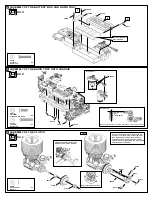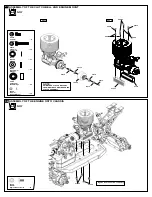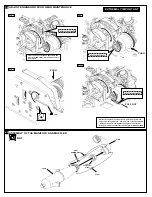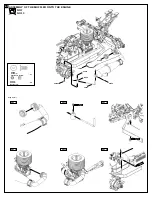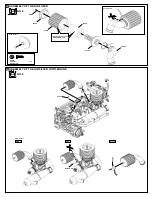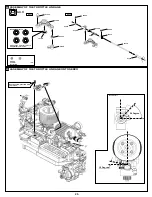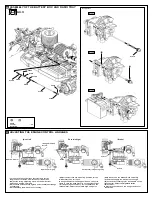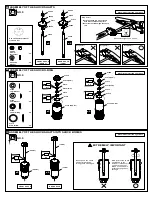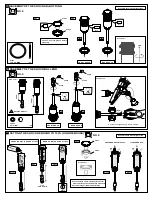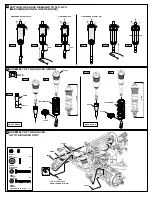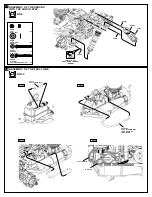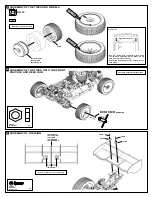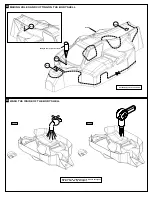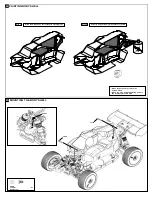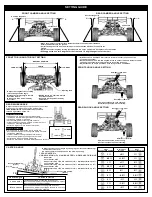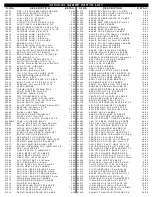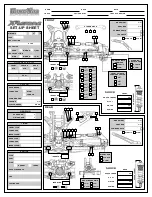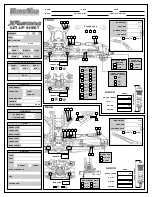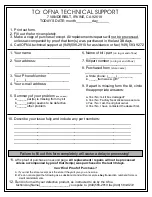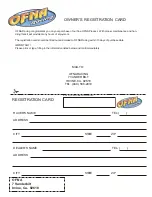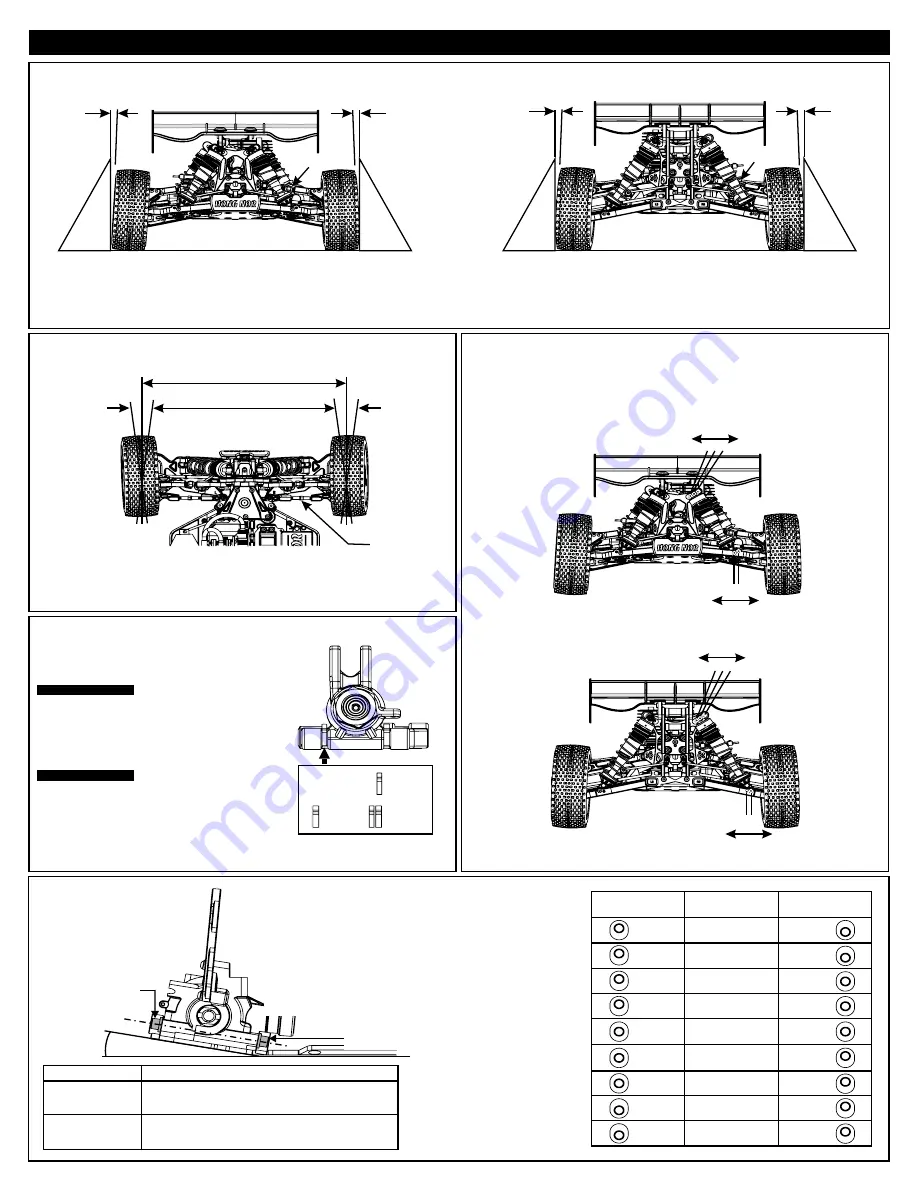
SETTING GUIDE
FRONT CAMBER ANGLE SETTING
REAR CAMBER ANGLE SETTING
•Place the model car on flat surface. Raise the chassis to its maximum clearance
before the wheels leave the ground.
•Adjust the length of the front and rear upper arms so that the wheels are vertical to the
ground.
•Adjust the camber angle by turning the turnbuckle rod on the upper arms clockwise or anti-clockwise.
(We suggest to use zero degree for the front and 1.5 degree
for the rear.)
negative
Caster angle
Characteristics
Decreases off-power steering into a corner.
Increases on-power steering out of and in a corner.
Increases straight-line stability.
-
+
Turnbuckle
-
+
Negative
Positive
-
+
Turnbuckle
-
+
Negative
Positive
Increases off-power steering into a corner.
Decreases on-power steering out of and in a corner.
Decreases straight-line stability.
Less caster
More caster
•Different shock positions will result in firmer or softer response of the
suspension system.
•Install the shock in an inward angle will cause softer rebound. Softer or firmer
suspension system will lead to different steering response.
•Adjust the shock angle positions according to track conditions.
FRONT SHOCK ANGLE SETTING
Firm front suspension, less steering.
Soft front suspension, more steering.
REAR SHOCK ANGLE SETTING
Firm rear suspension, over steering.
Soft rear suspension, under steering.
REAR WHEELBASE
Adjust the wheelbase by using the spacers on either
side of the rear wheel hub (at the bottom pin).
less spacers in front of the rear wheel hub.
- increases rearward weight transfer during acceleration.
- increases on-power traction.
- quicker off-power steering into corners.
- slight tendency to push on-power at corner exit.
- increases steering response.
- better on tighter, more technical tracks.
more spacers in front of the rear wheel hub.
- decreases off-power steering into sharp corners.
- increases stability.
- slower initial steering reaction (off-power).
- improves on-power steering at corner exit.
- better handling over bumps and ruts.
- better on more open tracks with high-speed corners.
IMPORTANT! Make equal adjustments on both
left and right sides of the car.
Shorter wheelbase
Longer wheelbase
+2.0mm
+2.5mm
0mm
+4.5mm
1 2 3
Soft
Firm
1 2
Soft
Firm
Soft
Firm
1 2 3
1 2
Soft
Firm
Eccentric Bushing
(
Front
)
r
s af ic
u
A m h
t k
k- p
0
0
0
0.5
1
0
0
1
0.5
1
1
+0.5
+1
+1.5
+2
0
0
0.5
1
-0.5
-1
-1.5
-2
1
1
0.5
1
Arm shaft
Kick-up
Front
Eccentric Bushing
Rear
Eccentric Bushing
10
•Adjust the front caster angle by changing the "Eccentric Bushing"
on the front lower arm.
•The final caster also depends on the kick-up setting.
TOTAL CASTER =
CHASSIS KICK-UP + C-HUB CASTER + ARM SHAFT KICK-UP
CASTER ANGLE
TOE-IN
NEUTRAL POSITION
Steering Rod
TOE-OUT
TOE-OUT
•Making the tie rod shorter will make
front tires toed out.
•Response will be quicker and may
under steer.
•Adjust the length of front steering
rod to change the toe angle.
•Making the tie rod longer will make
front tires toed in.
•Response will be slower and may
over steer.
FRONT TOE-IN AND TOE-OUT SETTING
Example
s
Total Caster
24
=
C
hassis Kick-up 10 + C-hub Caster 12 + Arm Shaft Kick-up +2
Total Caster
22
=
C
hassis Kick-up 10 + C-hub Caster 12 + Arm Shaft Kick-up 0
Total Caster
20
=
C
hassis Kick-up 10 + C-hub Caster 12 + Arm Shaft Kick-up -2
Eccentric Bushing
(Rear )

